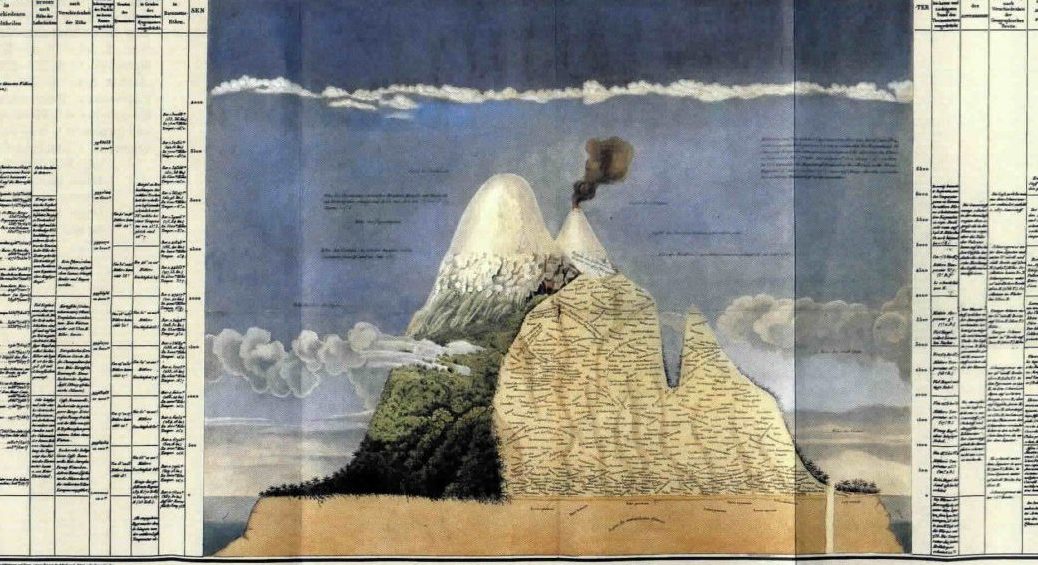
2021 Events
A huge thank you to all those who hosted an event for September 2021’s International Humboldt Day!
Many of the events were recorded, and links to the recordings are hosted by either the local organizers via Facebook/youtube links or by the International Biogeography Society on the ‘Humboldt Day’ Youtube channel.
List of recordings available:
–Why did Humboldt fake the plant data in his ‘Tableau Physique des Andes,’ and what about the data in his ‘Tableau Physique des Iles Canaries’?
–Human Biogeography: Understanding the Spatial Distribution of People, Cultures, and Languages
–Biomes and Biochoria: Making Sense of Biogeographic Units
–IBS Education Committee
–Phylogeography India
–Biogeography Talks II (Turkey)
Session: Frontiers of Biogeography – Special Issues
–Citizen Science – Special Issue (Frontiers of Biogeography): Call for papers
–Transboundary Conservation Under Climate Change – Special Issue Overview (Frontiers of Biogeography)
–Elevational Gradients and Mountain Biodiversity – Special Issue Overview (Frontiers of Biogeography)
Why did Humboldt fake the plant data in his ‘Tableau Physique des Andes,’ and what about the data in his ‘Tableau Physique des Iles Canaries’?
Speaker: Susanne Renner
An unanswered question is why Humboldt faked the plant names on the various versions of his most famous illustration, the 1805 Essai sur la Géographie des Plantes accompagné d’un tableau physique des régions équinoxiales. Moret and colleagues (PNAS 2019) have made a huge contribution to science by unearthing and analyzing overlooked historical documents that show that the top section of the Tableau Physique, above the tree line, is based on faked field data. Instead of correcting his fakes, Humboldt in subsequent publications kept inventing new plant names. Susanne Renner explores the reasoning behind why Humboldt never bothered to correct his invented ‘grass zone’ at timberline.
Human Biogeography: Understanding the Spatial Distribution of People, Cultures, and Languages
In this seminar, we will explore how geography, ecology, and climate have interacted to shape past human migrations and patterns of human (genetic, cultural, and linguistic) diversity. To understand the biogeography of our species, insights from different disciplines need to be integrated. Therefore, the talks in this session are given by experts from disciplines closely related to biogeography, including macroecology, population genomics, anthropology, archaeology, and socio-environmental modelling.
Talks:
-Human Biogeography: towards understanding the spatial distribution of people, cultures, and languages (Sietze Norder, Leiden University)
-Drivers of geographic patterns of North American language diversity (Marco Coelho, Swiss Federal Institute for Forest, Snow and Landscape Research WSL, Birmensdorf)
-Ancient genomics and biogeography: what can DNA tell us about the spatial movement of humans during the European Holocene? (Fernando Racimo, University of Copenhagen)
-Ptolemy, Copernicus, and Human Biogeography: Common Sense vs. the Science of Human Diversity (John Edward Terrell, University of Illinois Chicago)
-Landscape rules predict optimal superhighways for the first peopling of Sahul (Stefani Crabtree, Utah State University / Santa Fe Institute)
Biomes and Biochoria: Making Sense of Biogeographic Units
Presenters: Andrés Moreira-Muñoz & Serban Proches
Speakers: Qin Li, Fernando C. V. Zanella, Andrés Moreira-Muñoz & Gabriela del Valle Elías, Carlos E. González-Orozco, Serban Proches
Current advances in biogeographic concepts and methods tend to crush in the definition and the explanatory potential of ecological versus historical classifications (i.e. the controversy between biomas and biochoras). This has not just scientific interest, but also practical application classifying degrees of human footprint in the defined bioregions. The main goal of the seminar is therefore to discuss latitudinal and altitudinal patterns of distribution in different biotic groups in different regions, in an integrated framework, for informing biogeographic regionalization and conservation prioritization.
IBS Education Committee
Speaker: Mark Lomolino
Overview from the International Biogeography Society’s Education Committee (Chaired and presented by Mark Lomolino), which was formed to address primarily the third part of the society’s stated mission (https://www.biogeography.org/about-us/mission-statement/)
Promote the training and education of biogeographers so that they may develop sound strategies for studying and conserving the world’s biota.
Phylogeography India
Organized by National Centre for Biological Science (NCBS), Bengaluru, Indian Institute of Science Education and Research (IISER) Tirupati, Andhra Pradesh, and CSIR- Centre for Cellular and Molecular Biology, Hyderabad, Telangana.
Speakers: Uma Ramakrishnan, D.K. Bharti, Scott Edwards, Jeannine Cavender-Bares
https://www.youtube.com/watch?v=granV_6o-4Q
Biogeography Talks II (Turkey)
Biogeography Talks II (Language: Turkish)
Meral Avci: Introduction
Emrah Coraman: Diversity and distribution of bats
Seda Akkurt Gumus: About current and next year’s future organizations from the International Biogeography Society
Frontiers of Biogeography – Special Issues
Organizer: Robert Whittaker
3 parts connected to special issues: Citizen Science, Transboundary Conservation and Climate Change, & Elevational Gradients and Mountain Biodiversity)
Citizen Science – Special Issue (Frontiers of Biogeography): Call for papers
Speaker: Robert Whittaker
Transboundary Conservation Under Climate Change – Special Issue Overview (Frontiers of Biogeography)
Speaker: Mary Blair (American Museum of Natural History – Center for Biodiversity and Conservation)
Elevational Gradients and Mountain Biodiversity – Special Issue Overview (Frontiers of Biogeography)
Speaker: Ole Vetaas (University of Bergen)
Articles:
– Mountain biodiversity and elevational gradients (Vetaas)
– High-elevation limits and the ecology of high-elevation vascular plants: legacies from Alexander von Humboldt (Birks)
– Investigating elevational gradients of species richness in a Mediterranean plant hotspot using a published flora (Musciano et al.)
– A pan-Himalayan test of predictions on plant species richness based on primary production and water-energy dynamics (Bhatta et al.)
– Do sub-groups of butterflies display different elevational distribution patterns in the Eastern Himalaya, India? (Dewan et al.)
– Phylogenetic diversity of ferns reveals different patterns of niche conservatism and habitat filtering between epiphytic and terrestrial assemblages (Hernandez-Rojas et al)
– Co-occurrence frequency in vegetation patches decreases towards the harsh edge along an arid volcanic elevational gradient (Eibes et al.)
– Seasonal variation in the ecology of tropical cavity-nesting Hymenoptera on Mt. Kilimanjaro (Mayr et al.)
2020’s events that were recorded can be found on the 2020 Events page and/or on International Humboldt Day’s Youtube Channel.